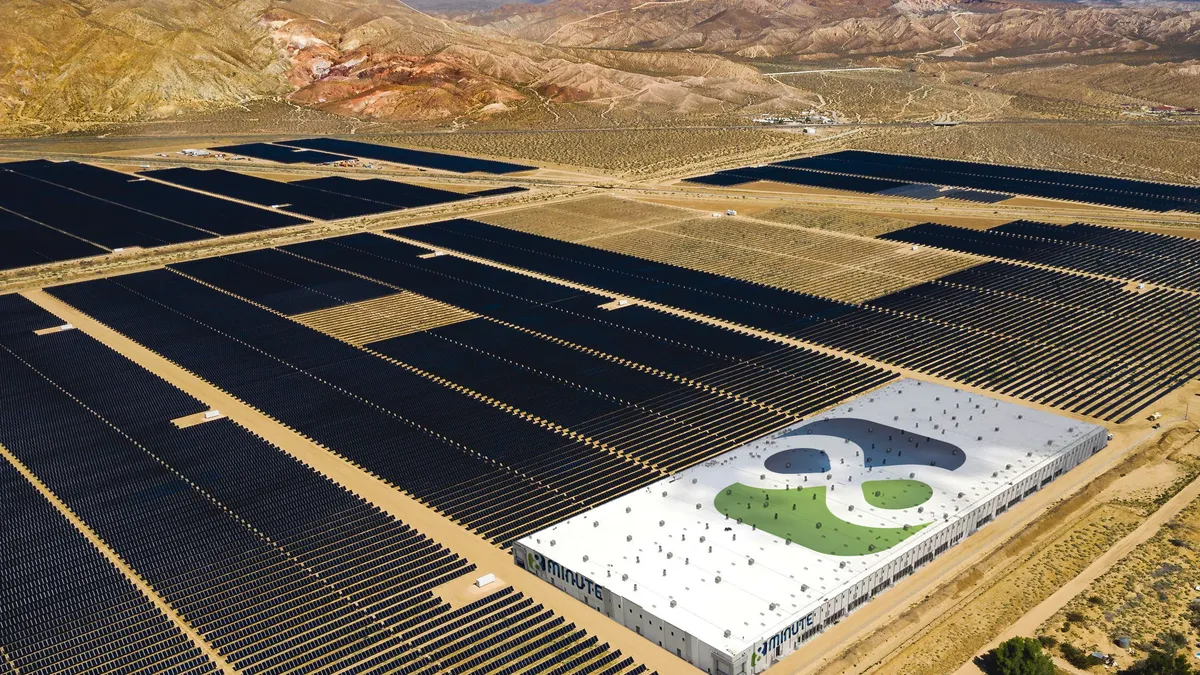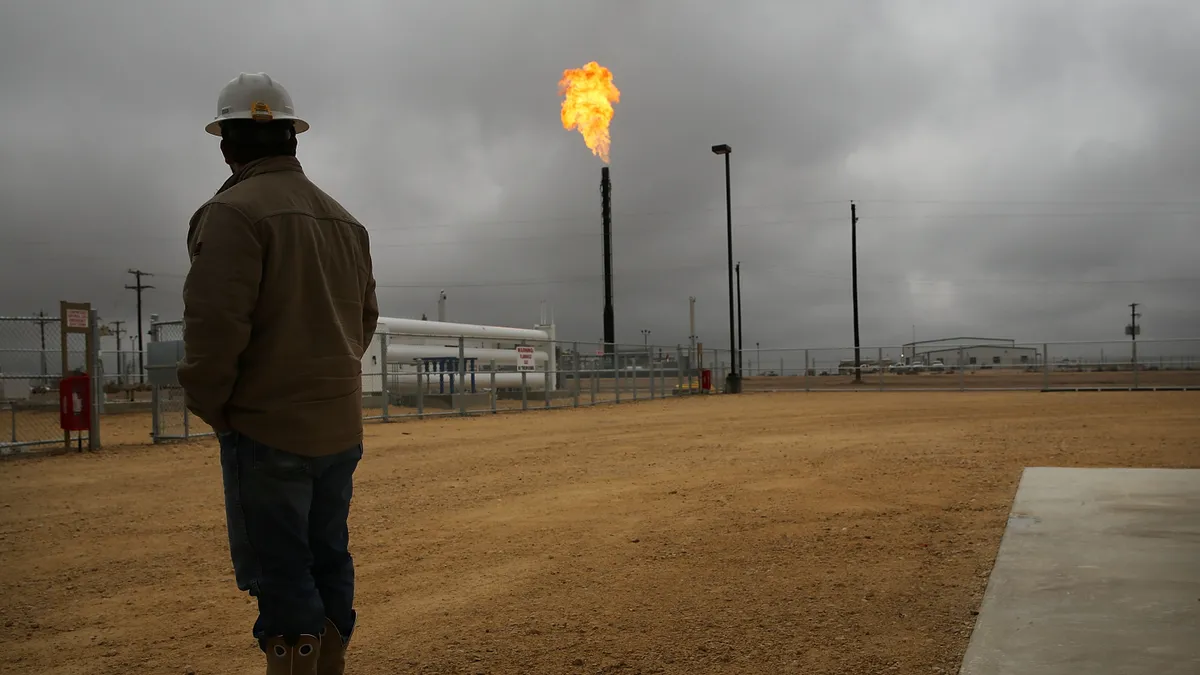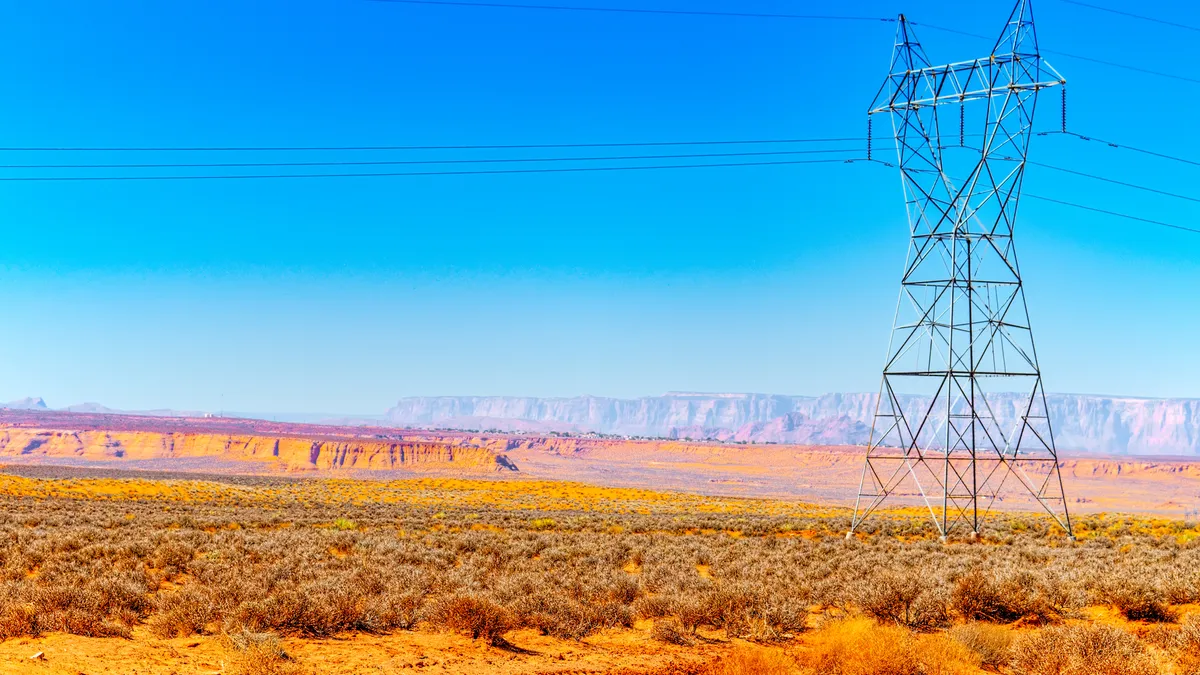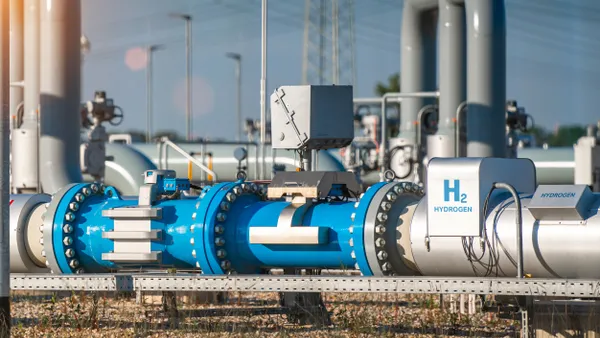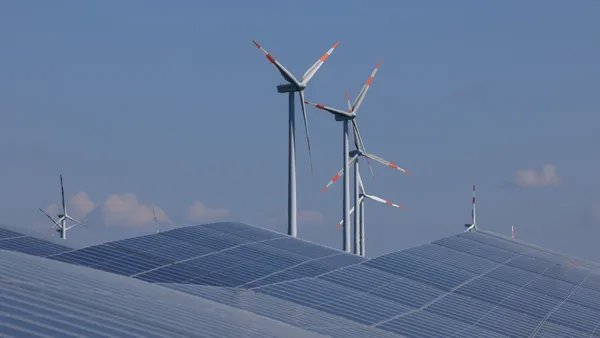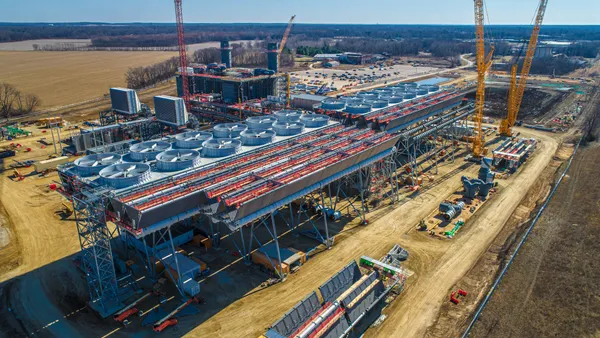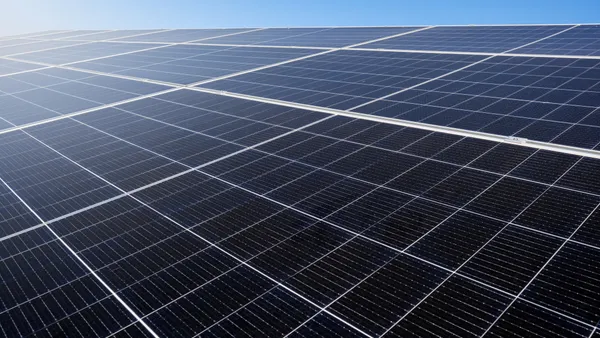Dive Brief:
- Adding one hour of energy storage to wind and solar plants in transmission-constrained regions increases the energy value — based on real-time electricity market prices — of plants near load centers by 49% and the energy value of plants in resource-rich areas by more than 81%, Lawrence Berkeley National Laboratory said in a study released last month.
- Increasing hybrid plants’ storage capacity from one to four hours boosts their energy value by a further 23% near load centers and 32% in resource-rich regions, LBNL said.
- But the study authors were surprised to find minimal energy value benefit for storage durations longer than four hours in either type of location. “We thought that maybe in congested areas, there might be an energy market incentive already for longer-duration storage,” said study co-author and LBNL research scientist Dev Millstein.
Dive Insight:
Hybrid power plants, especially solar-battery hybrids, are increasingly popular with U.S. renewables developers. Hybrids accounted for 55% of active utility-scale solar capacity and 52% of active utility-scale energy storage capacity in the U.S. interconnection queue as of year-end 2023, LBNL said last month in a separate briefing.
“The queue data provides good evidence that hybridization of solar will continue” over at least the next several years, Millstein said.
LBNL’s September briefing found hybrids accounted for a smaller share of wind capacity pending interconnection at the end of 2023 — just 14% of total requested wind capacity and 5% of overall hybrid capacity in the queue.
Capacity market dynamics could play a role in lower wind hybridization rates, Millstein said. His study found that while the typical solar hybrid achieved 90% capacity credit — in simplified terms, the plant’s capacity factor during the year’s top 100 net load hours — with four hours of storage, wind hybrids required eight hours of storage to reach that threshold.
The difference may be attributable in part to “the underlying correlation of solar output with high demand periods,” and suggests that wind hybrids in congested regions may be a better fit for longer-duration storage than similarly-situated solar plants, the study said.
In markets where electricity demand peaks in the late afternoon and early evening, solar’s diurnal generation pattern means solar plus relatively short-duration storage is a natural complement to the load profile, Millstein said. Because wind generation tends to peak at night, wind plus storage is not clearly as complementary, he said.
Capacity credit potential varies significantly by location and season, which complicates the picture and necessitates further study, Millstein said. Though energy markets have historically been a bigger source of revenue for renewables plants than capacity markets, developers could be incentivized to add storage at durations beyond what energy markets would dictate in regions with more robust capacity markets or higher potential capacity payments, Millstein said.
But, notwithstanding expectations that the lithium-ion battery market will remain oversupplied through 2028 — thus driving down battery prices — the sharp dropoff in energy market revenue after four hours duration suggests the incremental cost of storage would likely need to be “pretty low” to justify overbuilding hybrid plants’ storage component, Millstein added.
Separately, the study found higher energy revenue potential for hybrid plants that charge from the grid due to increased energy arbitrage potential, especially in resource-rich areas. For example, a grid-charging solar hybrid plant paired with four hours of storage earns $12/MWh more than a comparable plant that does not charge from the grid, LBNL said.
The Inflation Reduction Act expanded the federal investment tax credit to include battery installations paired with solar arrays, significantly improving the economics of hybrid power plants.


